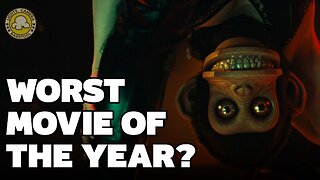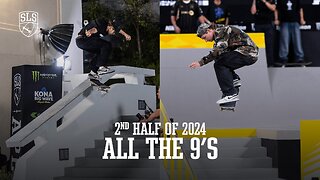Premium Only Content

Is Paris Burning? (Film 1966)
Is Paris Burning? (French: Paris brûle-t-il ?) is a 1966 epic black-and-white war film about the liberation of Paris in August 1944 by the French Resistance and the Free French Forces during World War II. A French-American co-production, it was directed by French filmmaker René Clément, with a screenplay by Gore Vidal, Francis Ford Coppola, Jean Aurenche, Pierre Bost and Claude Brulé, adapted from the 1965 book of the same title by Larry Collins and Dominique Lapierre.
The film stars an international ensemble cast that includes French (Jean-Paul Belmondo, Alain Delon, Bruno Cremer, Pierre Vaneck, Jean-Pierre Cassel, Leslie Caron, Charles Boyer, Yves Montand), American (Orson Welles, Kirk Douglas, Glenn Ford, Robert Stack, Anthony Perkins, George Chakiris) and German (Gert Fröbe, Hannes Messemer, Ernst Fritz Fürbringer, Harry Meyen, Wolfgang Preiss) stars.
The film is based on the best-selling book by Larry Collins and Dominique Lapierre and was directed by René Clément, from a screenplay by Gore Vidal and Francis Ford Coppola. The film was shot in black and white mainly because, although the French authorities would allow Nazi swastika flags to be displayed on public buildings for key shots, they would not permit the flags to bear in their original red color; as a result, green swastika flags were used, which photographed adequately in black and white. However, the closing credits feature aerial shots of Paris in color. All sequences featuring French and German actors were filmed in their native languages and later dubbed in English, while all the sequences with the American actors (including Welles) were filmed in English.[citation needed] Separate French and English-language dubs were produced. The score was composed by Maurice Jarre, whose music for "The Paris Waltz", with lyrics by Maurice Vidalin, became a patriotic anthem sung by Mireille Mathieu under the title "Paris en colère".
The production was filmed at 180 sites throughout Paris, including at Rue de la Huchette, Place des Vosges, Les Invalides, Place de la Concorde, Notre-Dame, the Latin Quarter and Musée Carnavalet. The film was released in France on October 26, 1966 and in the United States on November 10, 1966. It received generally positive reviews, and was the fourth-most-popular film of the year in France for 1966. It was nominated for Best Cinematography (Black and White) and Academy Award for Best Art Direction at the 40th Academy Awards and a Golden Globe Award for Best Original Score.
-
 1:39:38
1:39:38
Adaneth - Cinema&TV
5 days agoMaria Theresia (Part IV-ENG SUB)
41 -
 49:04
49:04
Lights, Camera, Barstool
1 day agoIs The Monkey The Worst Movie Of The Year?? + Amazon Gets Bond
81.5K5 -
 24:19
24:19
Adam Carolla
1 day agoDiddy’s Legal Drama Escalates, Smuggler Caught Hiding WHAT? + Philly Eagles & The White House #news
158K21 -
 10:12
10:12
Mike Rowe
2 days agoClint Hill: What A Man. What A Life. | The Way I Heard It with Mike Rowe
142K17 -
 1:31:52
1:31:52
Redacted News
15 hours agoBOMBSHELL! This is war! FBI whistleblowers reveal Epstein files being destroyed? | Redacted News
209K391 -
 48:55
48:55
Candace Show Podcast
15 hours agoSTOP EVERYTHING. They FINALLY Mentioned ME In The Blake Lively Lawsuit! | Candace Ep 152
179K141 -
 1:02:51
1:02:51
In The Litter Box w/ Jewels & Catturd
1 day agoWhere are the Epstein Files? | In the Litter Box w/ Jewels & Catturd – Ep. 750 – 2/26/2025
122K91 -
 1:59:06
1:59:06
Revenge of the Cis
17 hours agoLocals Episode 198: Suits
99.7K16 -
 1:38:56
1:38:56
SLS - Street League Skateboarding
1 day agoTop Moments from the Second Half of the 2024 SLS Championship Tour! All The 9’s 🔥
69.8K2 -
 24:22
24:22
Breaking Points
19 hours agoHouse GOP RAMS THROUGH Medicaid Cuts
70.8K46